The AMD Ryzen 7 9800X3D is here, and it is just about what we would expect. Better said, it is a great eight-core processor because it uses Zen 5 along with 3D V-Cache. Realistically, this is a gaming processor, and today, on the embargo lift, you will likely see that most sites have this as a new king of gaming, especially at low resolution where CPU bottlenecks are more pronounced. For our piece, we are going to take a quick look at how it compares for non-gaming tasks.
AMD Ryzen 7 9800X3D Overview
We have covered the AMD Zen 5 microarchitecture a few times now. Feel free to read more about that at your leisure. The AMD Ryzen 7 9800X3D takes that Zen 5 core in the AMD Ryzen 9000 series AM5 platform and adds 64MB of 3D V-Cache at a 120W TDP.
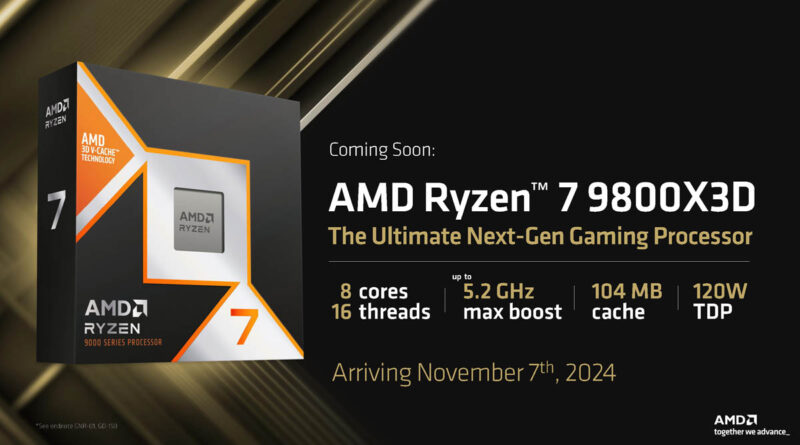
If your goal is to just get a higher clock speed 8-core 16-thread processor, the AMD Ryzen 7 9700X is probably the better option at this point. On the other hand, a huge number of applications can take advantage of the larger cache, and that can make the new Ryzen 7 9800X3D a better option.
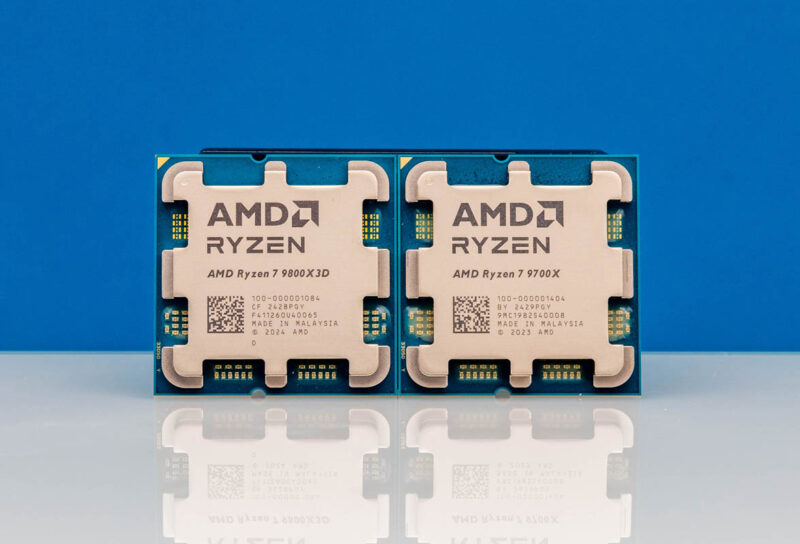
AMD calls this its 2nd Gen AMD 3D V-Cache technology. The new method of adding the 64MB L3 cache die on the bottom allows for better thermal conductivity to the cooler and therefore we get higher clock speeds and overclocking capability.
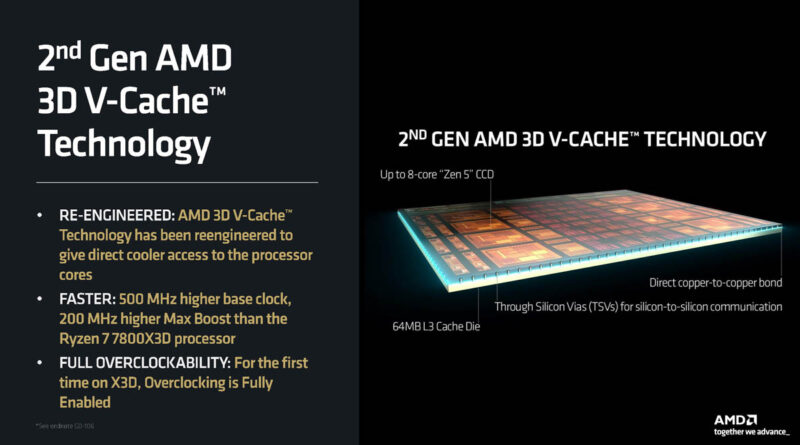
Here is the delidded shot that AMD sent us.
The new 64MB L3 cache die is bonded below the Zen 5 CCD. That means the Zen 5 CCD is on the cooling solution side of the package.
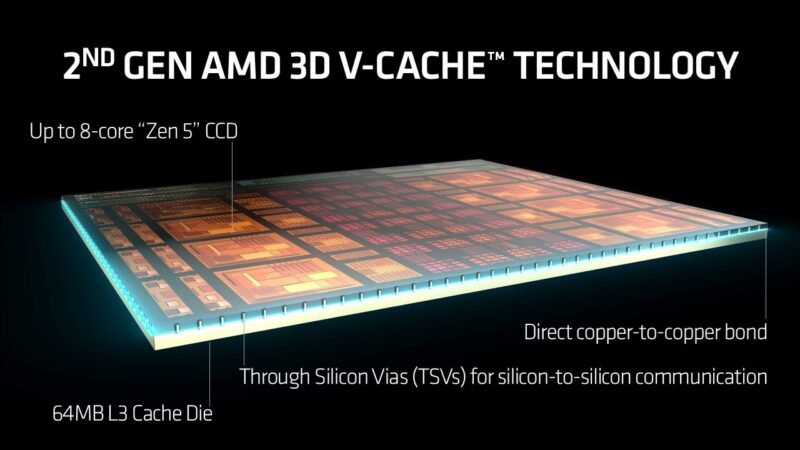
That 64MB plus the 32MB on the CCD gives us 96MB of L3 cache. The 104MB figure is that 96MB plus 1MB of L2 cache per core for 8MB L2 total.
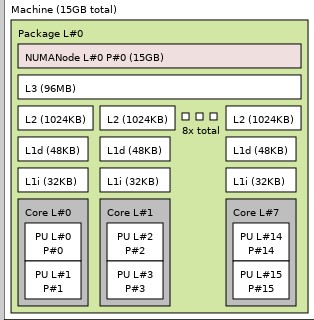
One other big benefit for many is that this is an AM5 socket CPU. We are using a relatively fancy ASRock X870E Taichi motherboard, but getting a cooler was easy since we have AM5-compatible coolers. The ecosystem is certainly primed for the new chips and at 120W, these are nowhere near the hottest chips we have seen recently.
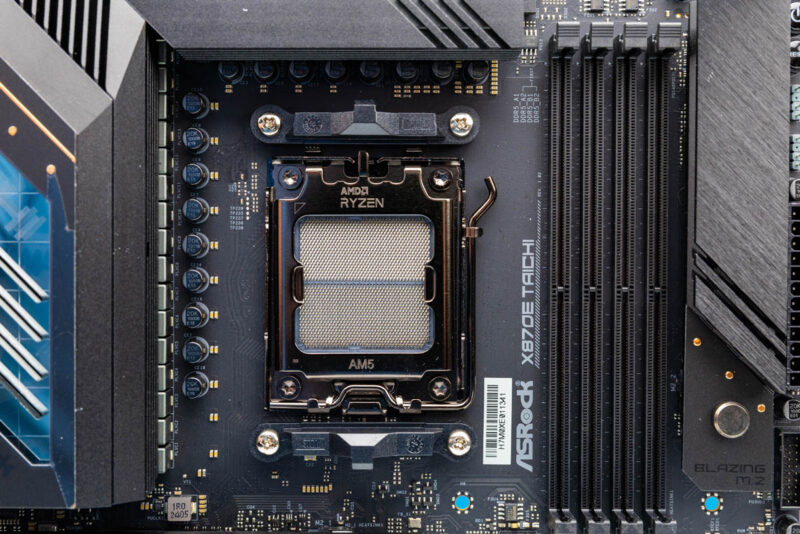
Next, let us discuss our test configuration.

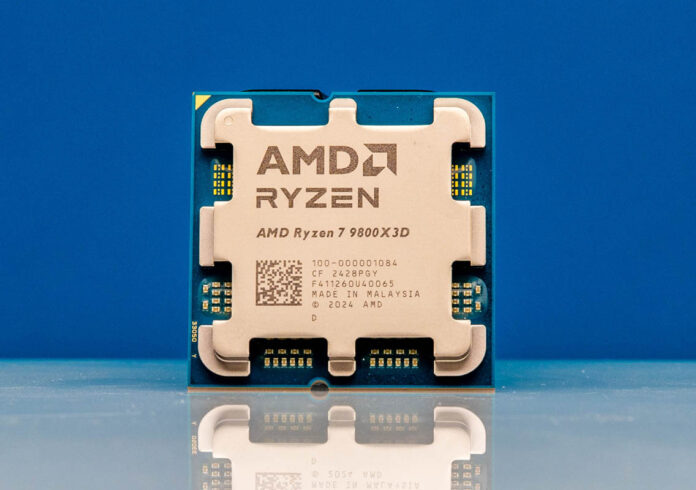
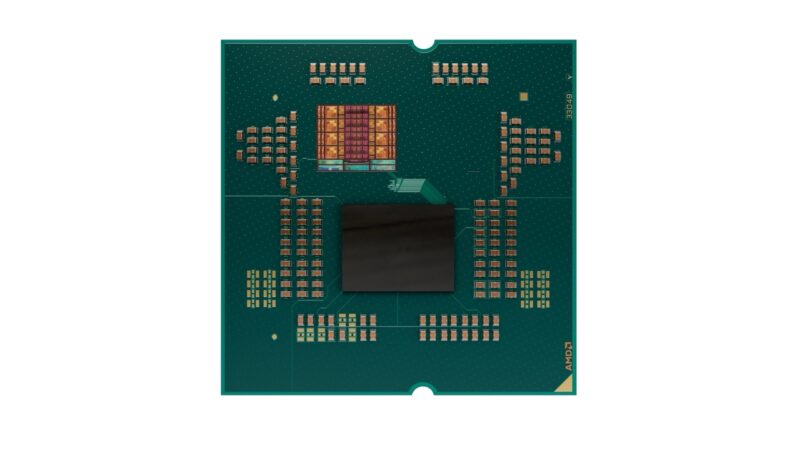
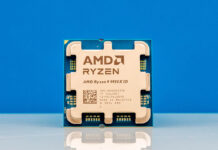
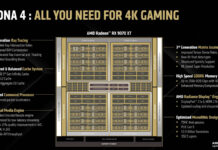

“It has neither a massive NPU nor integrated graphics”.
Are you sure about the graphics? There should be some basic graphics on the IO die (there are for the non-3D part). If AMD have disabled that for this chip (or if it has a different IO die), that’s significant enough that it should be explicitly called out.
@James
They haven’t disabled anything. It uses the standard AM5 IO die with 2 CUs of RDNA 2 iGPU.
As far as I know there’s only one SKU that has the iGPU disabled – Ryzen 5 7500F.
Does this downclock memory if 4 DIMMs are fully populated? If so, how much?
@James
Official specs are on AMD’s site. 4 DIMMs limit the officially supported speed to DDR5-3600. Anything above it is overclocking, but might work.
James – Just edited that to be “nor massive integrated graphics” to make it more clear. I know we tested it and the motherboard we used supports it.
I’d like to see an Epyc/Threadripper with 3D Vcache on all CCD’s.
Reason being that when you have a 7950x3d (and I assume same for 9950x3d), when you spin up a game, the scheduler nearly disables the non-3dvcache cores, so that the game doesn’t try to use both CCD’s. In some early cases the mixed ccd does not disable the non-vcache ccd and you get worse performance. This is mostly no longer the case, but if you don’t need every last ounce of frequency on those higher frequency/lower cache parts then why not?
An epyc that has Zen5 x3d ccd’s for all…probably cost a lot, but 128 cores (16ccd’s) …that would be 1.5Gb of cache for a single chip…databases would scream with performance.
we want you build server with 9800x3d too
please run 5-6 games on linux like cyberpank,fortnight,Canter strike VS 14900k
@ramin pro cyberpank. Canter strike.